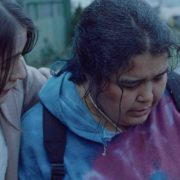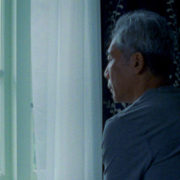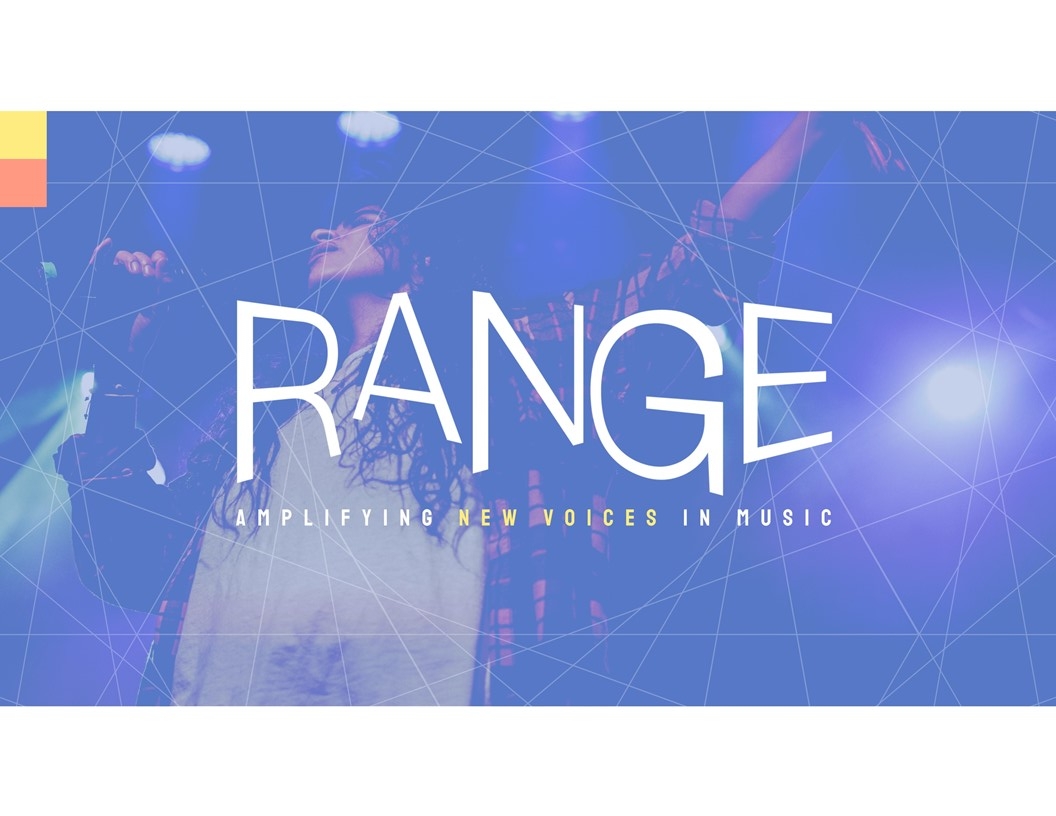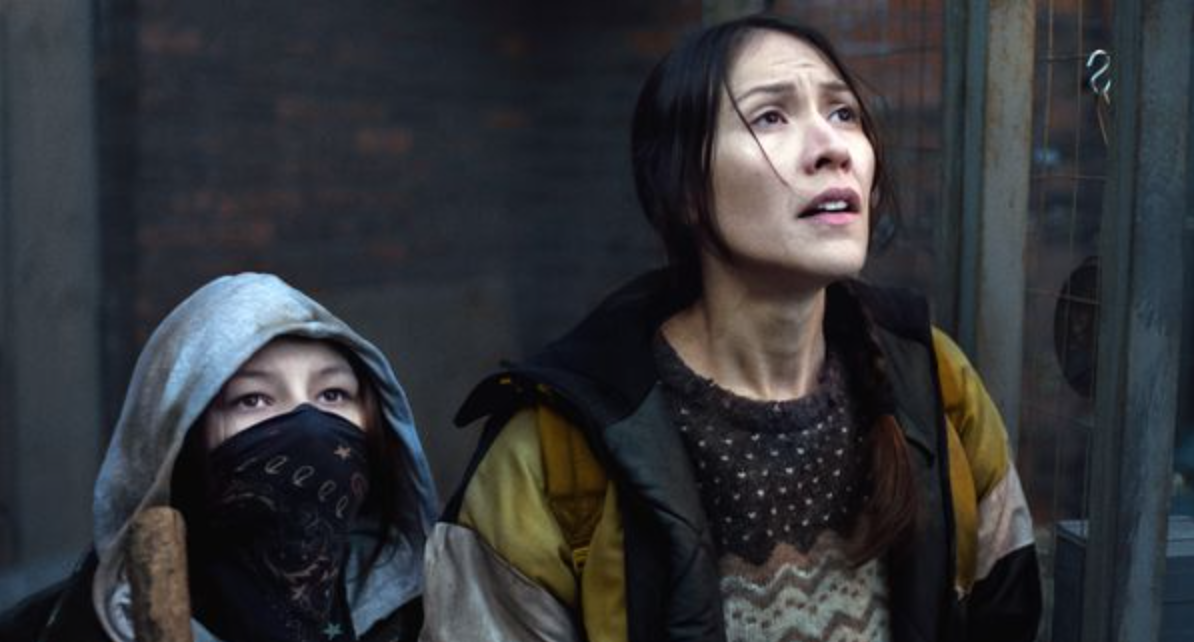The National Film Board of Canada VR experience This is Not a Ceremony, written and directed by Ahnahktsipiitaa (Colin Van Loon) had its world premiere at the 2022 Sundance Film Festival. The winning submission of the NFB/imagineNATIVE Digital Project Prize was presented in the New Frontier program available worldwide via “The Spaceship”

This is Not a Ceremony (2022), National Film Board of Canada
Ahnahktsipiitaa takes us beyond the veil of traditional media and transports us directly into another realm, where past, present and future are one; where colonial rules and assumptions are forgotten; and where we can finally get to the truth of the matter.
In this stunning, cinematic VR experience, we’re invited to watch as the narrative unfolds all around us, on a dream-like plane of existence where spirits and time flow and merge, and stories come to life and dance before our eyes. Inside this immersive virtual world, two Indigenous trickster poets in mirrored red suits and long braids guide us on a journey, in which community protocols confront our notions of personal responsibility. The pair’s sharp wit and caustic humour will be familiar to anyone who has spent time in First Nation communities, and their comradery keeps us at ease as we explore some of the darker sides of living life in Canada while Indigenous.
Matriarchs and Inii (buffalo) rule this virtual realm. They pull no punches, yet they lead us with kindness, bringing us face-to-face with some of the grim realities Indigenous Peoples have experienced. We explore the stories of two Indigenous men wounded by the colonial tradition of systemic racism. These stories disrupt the status quo, laying bare the benign cruelty of colonial oppression, and dare to ask, “Now that you know, just what are you going to do about it?”

This is Not a Ceremony (2022), National Film Board of Canada
This unforgettable experience will stay with you long after it’s over. Challenging us to act on what we’ve learned, This is Not a Ceremony calls on all who’ve watched to bear witness and share what they’ve seen and heard, to learn from these tragedies—and to never forget.
Ahnahktsipiitaa is Niitsitapi (Blackfoot) and Dutch, originally from the Piikani Nation. He currently lives on Westbank First Nation lands in West Kelowna. He works for Emily Carr University in the Indigenous Matriarchs 4 AR/VR media lab (IM4-Lab).
We recently had the opportunity to ask him a few questions.
This Is Not a Ceremony is not a film, it is being called a “cinematic VR experience” and can only be seen through a virtual reality headset. What can you tell us about directing a Virtual Reality experience? How did the pandemic effect VR?
Directing VR and shooting with a 360° video camera is similar to shooting with a typical 2D camera and a wide lens. The space needed to be prepped in all directions, and practical lighting with hidden lights worked very well for us. We also shot certain bits with 2D cameras and then inserted and post-converted those shots to 3D as well.
The two Indigenous trickster poets were shot in 360-3D, and while we shot them with a 360° frame, we only used half the shot, because the green screen space at Vancouver Film School was more fitting for 180°. 360° to me feels akin to typical film/video, but it’s always important to consider the audience that’s watching; certain choices must be made, like no panning, and fast cutting doesn’t seem to work well in many instances. I was typically trying to look in all directions just before we rolled.
The pandemic created some problems in post-production. We were sending 10K 3D files between our art director James Monkman in Toronto, the NFB’s Digital Studio and our editor Jessica Dymond in Vancouver and Westbank First Nation in West Kelowna, where I live. The initial renders for 3D assets were done in layers that we could turn on or off in the 360-video timeline, which significantly helped the final render. If we had tried to render everything at once, it would have taken months. YouTube 360 was so helpful to us, as we used it for review, in the way 2D-video teams might use Frame.io or a service like that.
What do you recommend to filmmakers and creators looking to develop works using new digital technologies?
Please spend a lot of time with the medium. I felt very lucky to be working with the NFB Digital Studio’s Dana Dansereau, Rob McLaughlin and Vincent McCurley, as they have developed many pieces there, so we could bounce ideas around as I began to write the project. During the initial development and writing periods, I spent a lot of time watching 360°-video to get a sense of the conventions and what I felt worked as an audience member, and what I wanted to avoid. My work at Emily Carr University and the Indigenous Matriarchs 4 AR/VR media lab (IM4) was also very helpful in this regard. Learn the medium fully before making assumptions. I was often surprised by how my thoughts about 360° video and VR changed over time. While it is similar to 2D video or film, it is also very different.
A big learning curve for me was finding ways to acknowledge the audience without interrupting the story’s flow. This is an important consideration, as the audience is part of the piece in a much different way than 2D video; they must look in certain directions to pan, they must choose to move their body. We must think of this when designing our flow of information and creating the sound design.
The Sundance New Frontier program showcases stories created through new convergences of film, art, and cutting-edge technologies. Tell us about your experience with the Sundance New Frontier program?
I love New Frontier: it is such an interesting collection of work. Chief Curator New Frontier and Senior Programmer, SFF Shari Frilot and her team really created something special for everyone who attended the festival. I felt so lucky to chat with other creators and hear about their process of developing work. This hybrid festival was so interesting, and while not quite the same as attending in person, it was still very special. We were gathering and speaking with other creators on a virtual platform called The Spaceship, using avatars. It felt very meta-verse, in a great way.
What is next for This is Not a Ceremony? What is next for you?
This Is Not a Ceremony will travel to other festivals and a variety of communities throughout Canada, including those that are connected to the piece, as well as larger centres.
I’m working on developing some other XR projects and producing a few projects between now and summer. I am super excited to start production on a web series with APTN lumi called Tales from the Rez, directed by Trevor Solway, who’s also the showrunner, and produced by my company, Blackfoot Nation Films.








